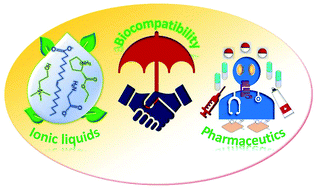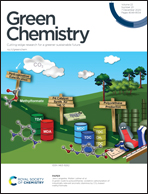Biocompatible ionic liquids and their applications in pharmaceutics
Abstract
Ionic liquids (ILs) have been used as solvents or materials, or both, in many applications, including pharmaceutics and medicine due to their exceptional properties consisting of the combination of “green” properties with tunable physicochemical and biological properties. The use of ILs in the pharmaceutical industry can address many challenges associated with the use of conventional organic solvents or water. ILs have been established as potential solvents to solubilize many insoluble or sparingly soluble drugs for formulations or delivery. The use of ILs can also address many of the drawbacks of solid-state drugs, including polymorphism and low solubility, stability, and bioavailability. However, many ILs are inherently toxic, which is the main challenge toward developing IL-based drug formulations and drug delivery systems. The use of second- and third-generation ILs comprising more biocompatible cations and anions, compared with the first-generation ILs, has considerably addressed the toxicity issue. A wide range of biocompatible ILs have been designed to improve the pharmacokinetic and pharmacodynamic properties, as well as the biological activity, of drugs. This review describes the advances in the area of green IL-related research and emphasizes the new conceptual development of ILs in pharmaceutics and medicine. Particular attention is given to the mechanistic knowledge in the synthesis of ILs, as well as to the ecotoxicological and biological impact of biocompatible ILs, stimulating the understanding of innovative technologies in IL-based drug delivery systems.

- This article is part of the themed collection: 2020 Green Chemistry Hot Articles


 Please wait while we load your content...
Please wait while we load your content...